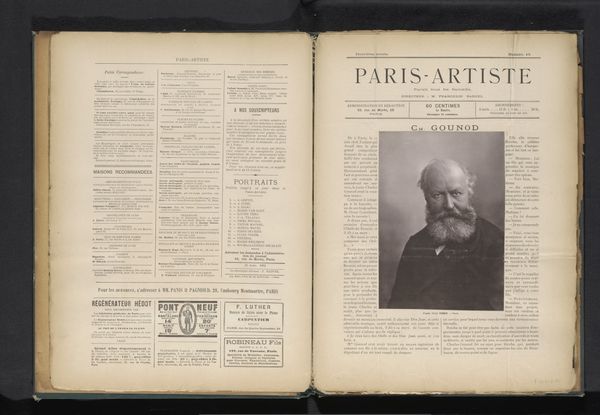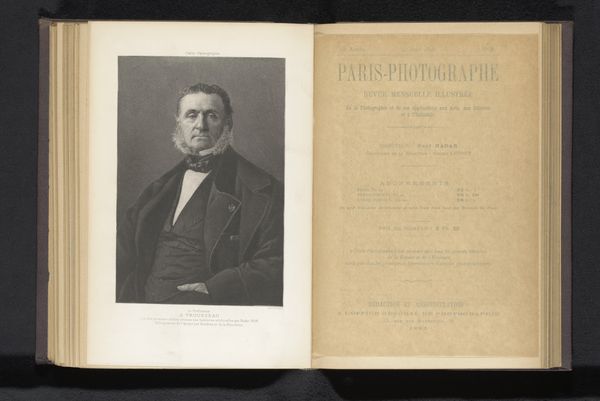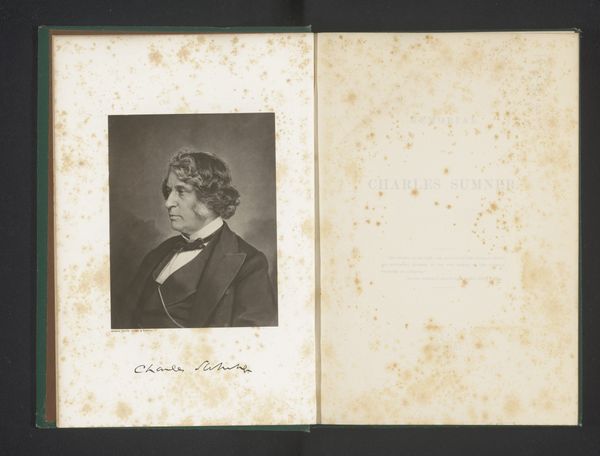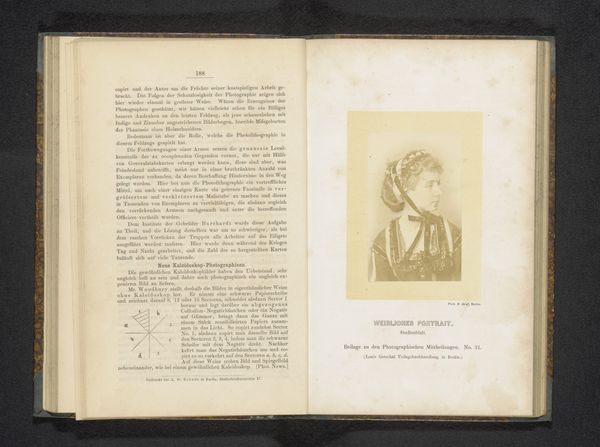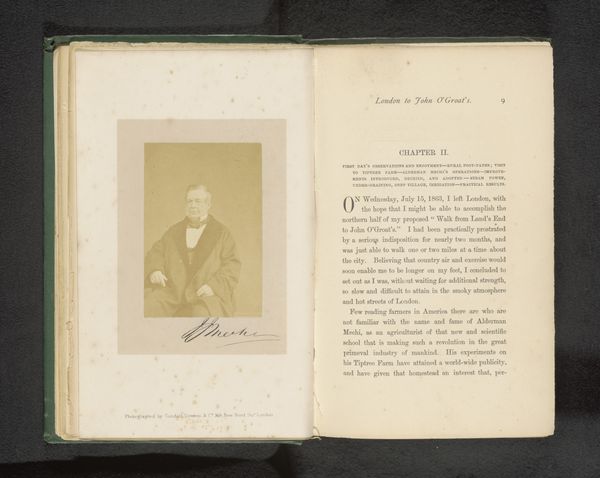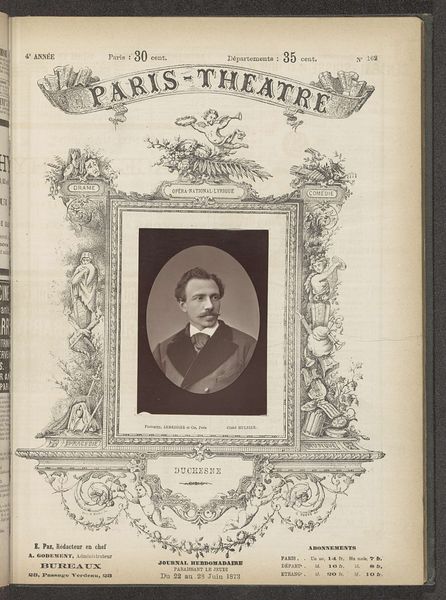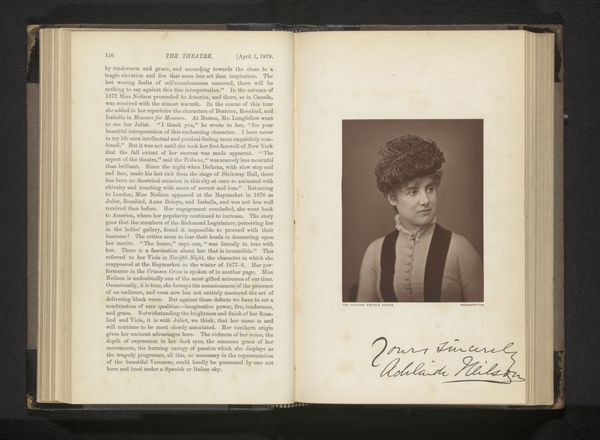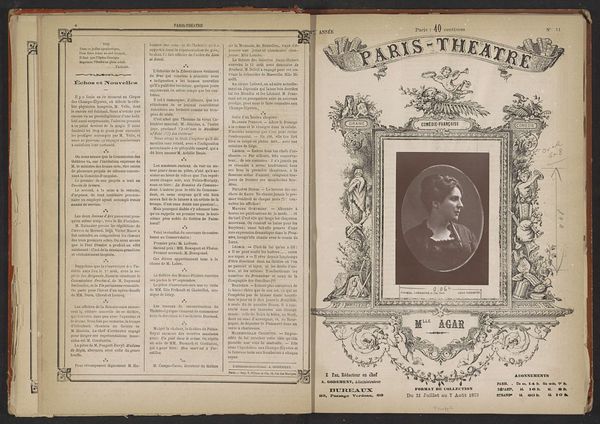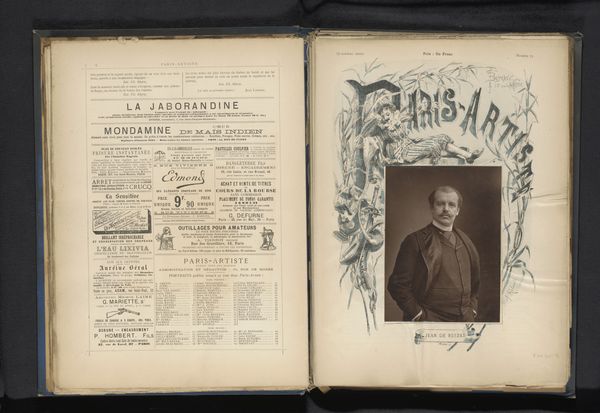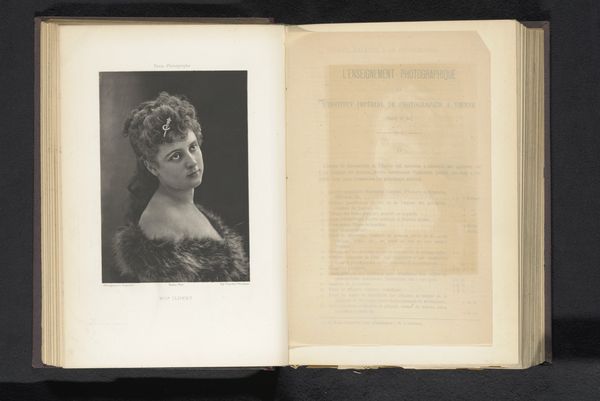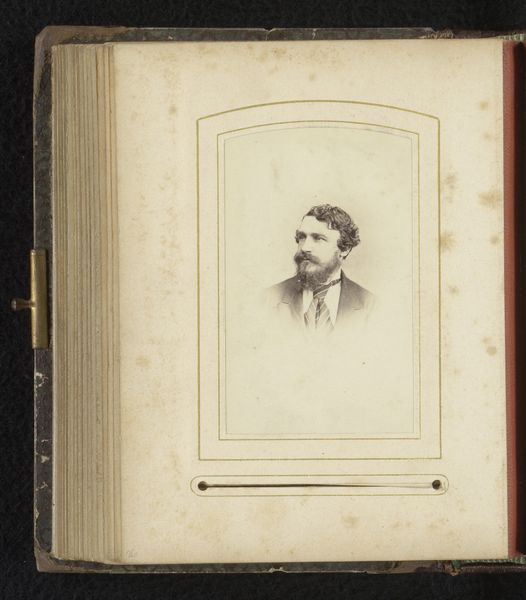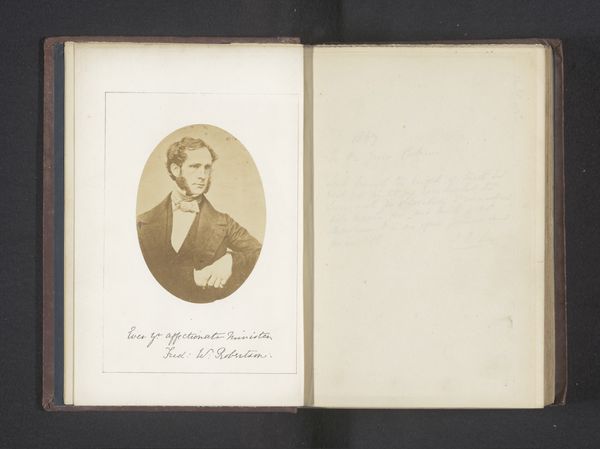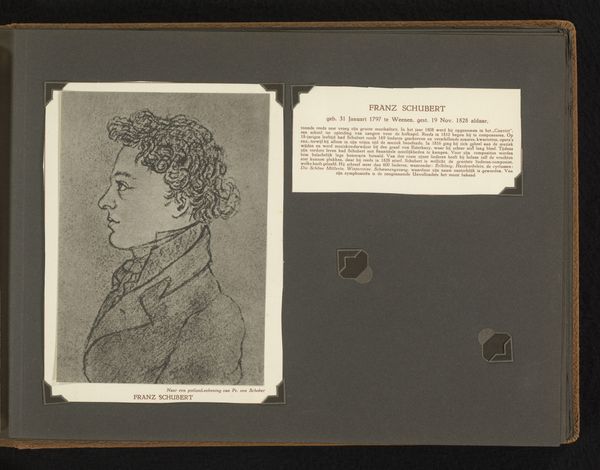
print, photography
portrait
photography
Dimensions: height 243 mm, width 189 mm
Copyright: Rijks Museum: Open Domain
Curator: Standing before us is a captivating print housed within the Rijksmuseum's collection: a photographic portrait of Albert Lambert. It dates back to around 1880-1885, captured by the famed Nadar. Editor: It possesses an intimate stillness. The oval portrait creates a symbolic frame, setting apart and concentrating attention on Albert's calm expression and steady gaze. Curator: Nadar, of course, wasn't merely a photographer but a significant figure within Parisian cultural circles. This print isn't a solitary work, rather part of a series within a periodical. He leveraged his studio for visibility within the public sphere. Editor: His presence on the front of "Paris-Artiste" magazine immediately identifies him with artistic innovation and, as a result, prestige. The soft sepia tones speak to an earlier age but, combined with that intensity of expression, conveys an undeniable, timeless sense of artistic spirit. I wonder, though, about the politics inherent in selecting whose likeness graced that cover. Curator: Undoubtedly, this magazine positioned individuals strategically. Think about this portrait not only depicting a specific person, but as a symbolic representation of an artistic, even bohemian, ideal circulated amongst a broad public readership. Lambert, frozen in the frame as a visual archetype, embodies the Parisian artistic persona. Editor: Right. And how that archetype is constructed and disseminated becomes paramount. Did it serve as inspiration or as an aspirational yardstick against which others measured themselves? This image could hold considerable sway in shaping expectations and even legitimizing certain artistic approaches within the wider artistic milieu. The seemingly candid quality of photography can lend such weight to these idealized images. Curator: Exactly. Also the details—the necktie, perhaps symbolizing creative freedom. The facial hair signals artistic tendencies. It’s like Nadar is creating an open symbol here, accessible and desirable in 1880s Paris. Editor: Seeing it now, knowing something of its place in popular media, I appreciate it even more. It transforms it, shifting from a simple image of a person into a representation carefully composed, carrying cultural ideas. Curator: Indeed. It showcases the powerful ways portraits engage not just with art, but cultural identities as a whole. Editor: Agreed. Considering the cultural forces at work allows the modern observer insight to historical aspirations and anxieties.
Comments
No comments
Be the first to comment and join the conversation on the ultimate creative platform.
